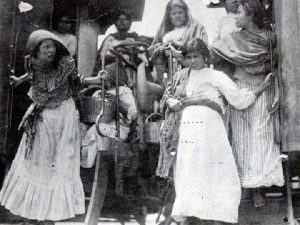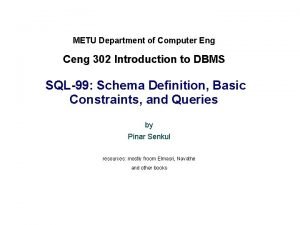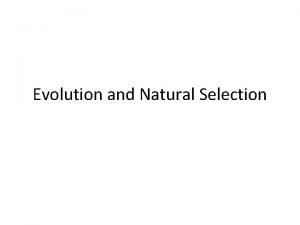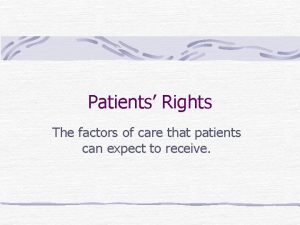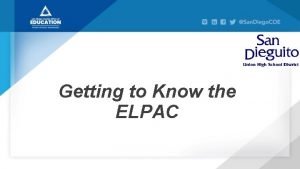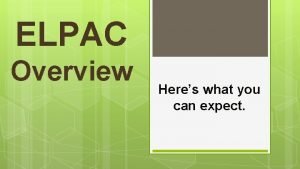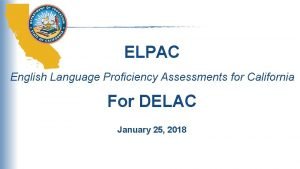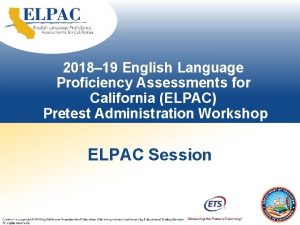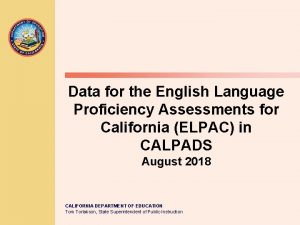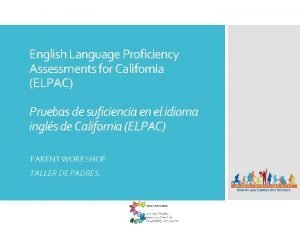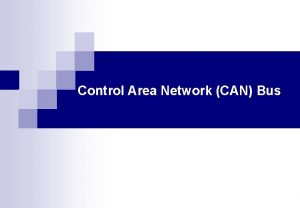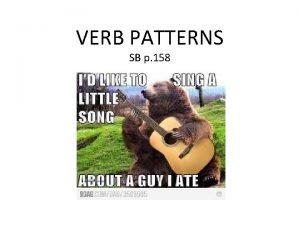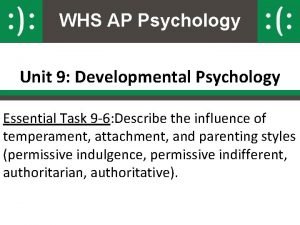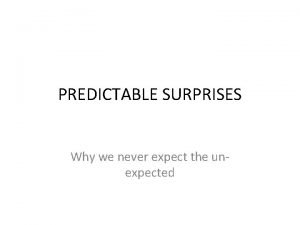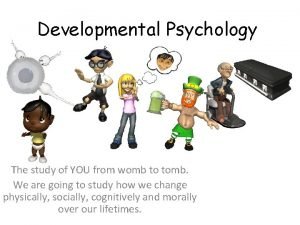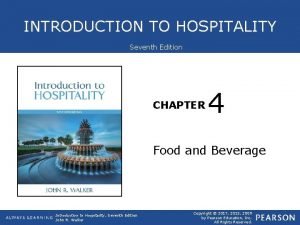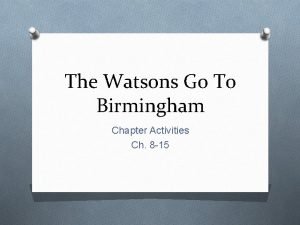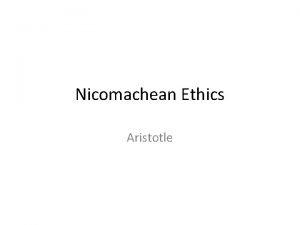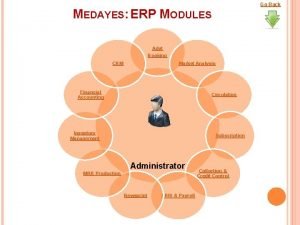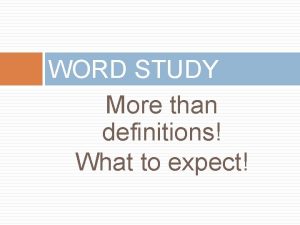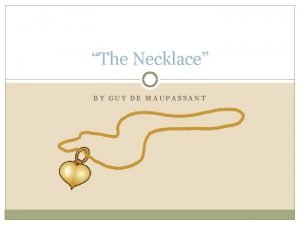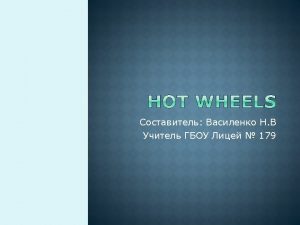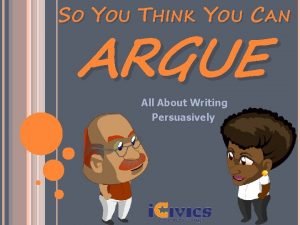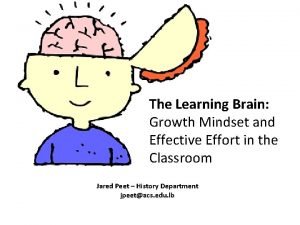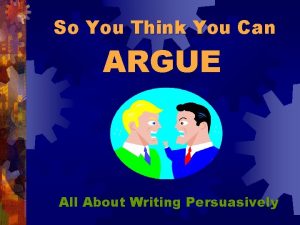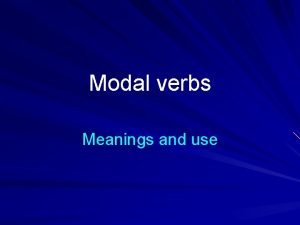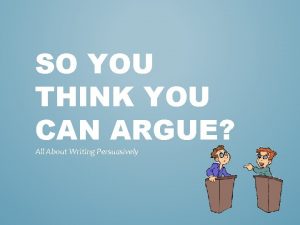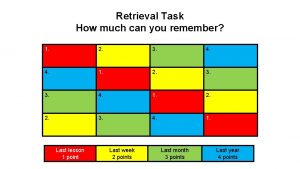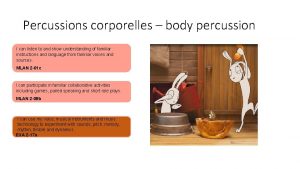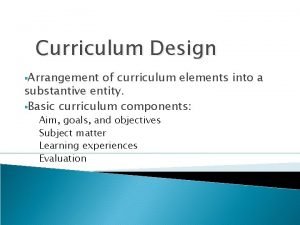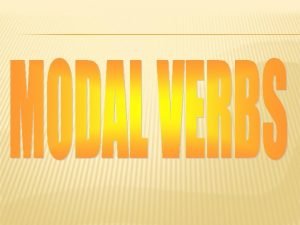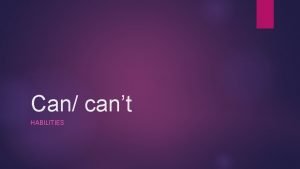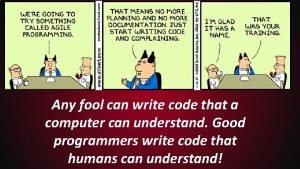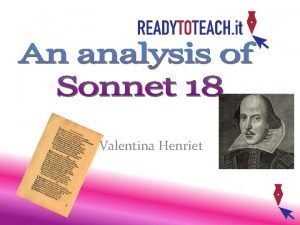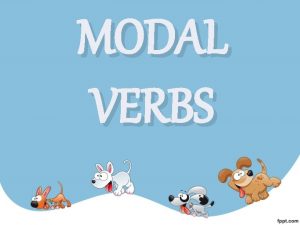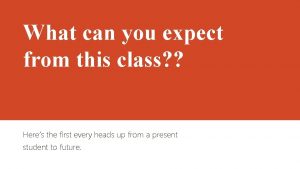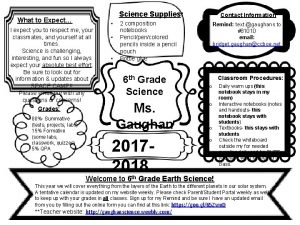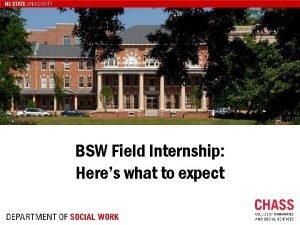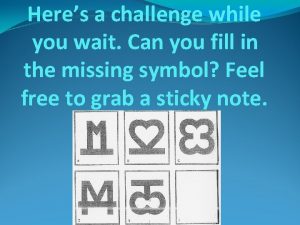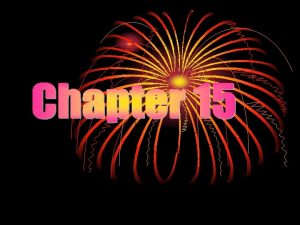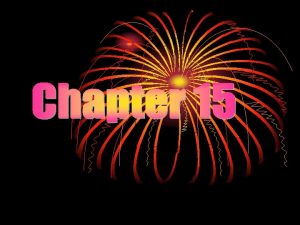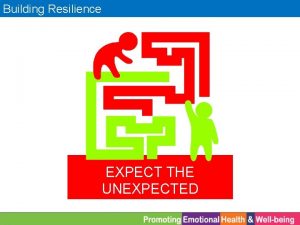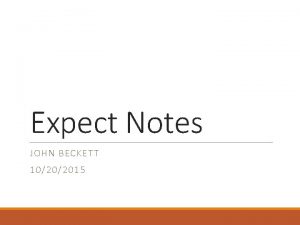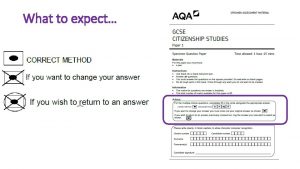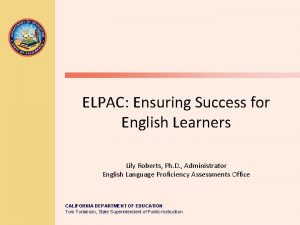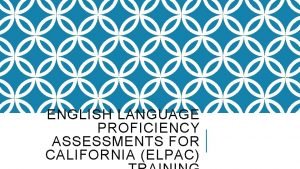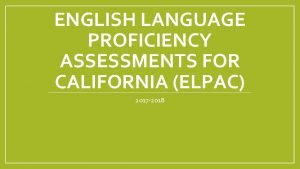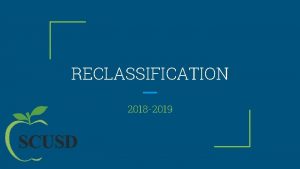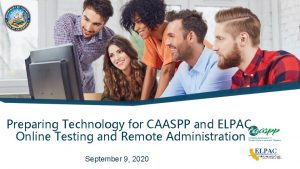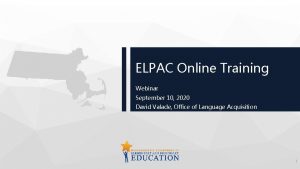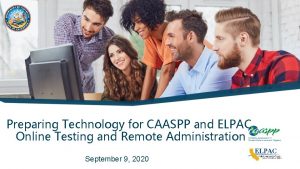ELPAC Overview Heres what you can expect How




































































- Slides: 68

ELPAC Overview Here’s what you can expect.

How can I reclassify? 1. Pass the state test - ELPAC 2. Receive a passing grade in English/ELD class. 3. Demonstrate basic grade level skill on assessment (RI) or SBAC ELA. 4. Parent approval

ELPAC v v Must score four or five overall. Each subcategory must be three or higher.

Reading Inventory (RI) v v v 9 th grade: 10 th grade: 11 th/12 th grade: 850 890 985 Strive for 1, 000 points every time because every point counts!

Here are some ELPAC examples! Practice along and notice how they are scored.

Writing Listening ELPAC Reading Speaking

Listening

Listening has four sections 1. 2. 3. 4. Listen to a short exchange. Listen to a classroom conversation. Listen to an oral presentation. Listen to a speaker support an opinion.

Listening: Short Were you. Exchange correct? Girl: Oh no! I think I left my chemistry notebook at home. All my notes are in there. I wonder if I should go to my locker and get a different notebook for class? Boy: Here—use my English notebook. After your class, you can tear out the pages with your notes and give the notebook back to me. Listen to a conversation between a girl and a boy. Listen carefully. You will hear the conversation ONLY ONCE. After listening, you will answer a question. 1. What is the girl trying to decide? A whether she should go back to her locker B whether she should buy a new notebook C whether she should finish her notes at home

Listening: Classroom Conversation Listen to a conversation between a girl and a boy. Listen carefully. You will hear the conversation ONLY ONCE. After listening, you will answer some questions.

Now, answer these questions: 2. What does the girl ask the boy Why is the girl pleased that to do? the boy will try to sit at the end A. Save her a seat of the aisle? B. help her find her assigned seat A. because she will be able to C. help her get her costume for see him easily from the front the show of the auditorium B. because she will be able to 3. Why is the girl going to be late? find him quickly after the show A. She will be helping audience ends members with their tickets. B. She will be performing in the C. because she will not need to talent show. bother audience members C. She will be helping backstage. 4.

Oral Presentation Narrator: Listen to a teacher talking about the businessman Andrew Carnegie. Listen carefully. You will hear the information only once. After listening, you will answer some questions. As you listen, you may use the blank areas in your Test Book to take notes.

Answer these questions… 5. How was Andrew Carnegie different from the other industrialists the teacher mentions? A He came from a wealthy family. B He was well-educated as a child. C He was born outside of the United States. 6. Why does the teacher mention a bobbin boy? A to explain who inspired Carnegie to become a businessman B to describe how hard Carnegie worked in his first job C to explain how difficult it was for Carnegie to find a

…and these 7. According to the teacher, what was Carnegie’s main contribution to the steel industry? A He built the largest steel mill in the world. B He created a new process for producing steel. C He persuaded other industrialists to create more products made from steel. 8. What point does the teacher make about libraries? A Carnegie built more libraries than other kinds of institutions. B Carnegie made visits to libraries all over the world. C Carnegie made sure that the schools he built also had libraries.

Listening: Listen to a Speaker Support an Opinion Narrator: Listen to a conversation between two students. The boy is discussing his opinion about walkable spaces. Listen carefully. You will hear the conversation only once. After listening, you will answer questions about the conversation and the evidence the boy gives to support his opinion. As you listen, you may use the blank areas of your Test Book to take notes.

Answer questions 9 -12… 9. Why does the boy mention walking his dog? A. to give an example of a common daily activity B. to introduce a problem he has faced C. to suggest that he and the girl have similar interests 10. Where did the boy first learn about walkable spaces? A. in a class at school B. from a magazine article

11. What does the boy say about pollution? A. It has many different sources. B. It would decrease if fewer people drove cars. C. It is a problem that has grown worse over the years. 12. What explanation does the boy give for the lack of walkable spaces? A. There is not enough public demand to create walkable spaces. B. Communities do not have enough money to create walkable spaces. C. Communities were designed with a focus on traveling by

Speaking

Speaking has five sections 1. 2. 3. 4. 5. “Talk about a scene” "Speech Functions” "Support an Opinion” "Present and Discuss Information” “Summarize an Academic Presentation”

“Talk About a Scene” 1. What is the student doing? 2. What is the student holding? 3. What is the teacher doing? 4. What kind of room is this? How do you know? 5. Describe the area where the students are standing. 6. Describe what the students in the picture are wearing.

Model: Volunteer Student and Teacher Directions: 1. Distribute copies of the two rubrics for “Talk About a Scene” and review with the class. 2. A volunteer student will be Partner A, and the teacher will be Partner B. 3. After viewing the picture, Partner A will ask the questions, and Partner B will answer them as completely as possible. 4. All students will rate the responses based on the rubric. 5. Once all questions have been answered, there will be a whole class discussion around the rubric and how to rate these responses.

Rubrics for Talk About a Scene Rubric for Quest. 4 -6 Rubric for Quest. 1 & 2 • • • Score 0 Incorrect response not relevant completely unintelligible no response contains no English “I don’t know. ” Score 1 Correct response • • • Score 0 Response is not relevant No response Response contains no English “I don’t know” Completely unintelligible • • Score 1 Response is limited or partially relevant Errors in grammar, pronunciation, or intonation impede meaning • • Score 2 Response is relevant Errors in grammar, pronunciation, or intonation do not impede meaning.

Let’s All Practice Talking About a Scene Directions: 1. In this section, students must be arranged in pairs. 2. Partner A will ask Partner B the questions, one at a time. 3. Partner B will respond as completely as possible. 4. Once done with the first round, discuss rating of Partner B’s responses. 5. Then, Partner A and Partner B will switch roles. 6. Partner B will ask the questions and Partner A will respond as completely as possible. 7. The teacher will listen to the various pairs as he/she walks around the room.

“Speech Functions” & Rubric 7. You want to know if your friend has finished working on a science project. What would you say to your friend? 0 = no response, or response is in another language. 1 = language is limited; listener needs to interpret meaning, or grammar errors. 2 = appropriately addresses the language.

“Support an Opinion” I am going to ask you for your opinion. 8. A local community center has money to support only one of two new classes. The first choice is a physical fitness class. The second choice is an art class. Which one do you think would be a better option for your community? Justify your choice by giving relevant reasons to support your opinion.

Rubric for “Support an Opinion” Score 0 • • • An opinion is not expressed Response contains no English No response, “I don’t know, ” or is completely unintelligible Score 1 • • • An opinion is • expressed but is NOT supported. A reason is not provided. Is not relevant, or is not clear. Errors in grammar, word choice, pronunciation, or • intonation often impede meaning. Speech may consist of isolated words or • phrases. Score 2 An opinion is expressed and supported using simple language and at least one simple relevant reason, or repeats language from the prompt. Listener effort may be required to interpret meaning. Errors in grammar, word choice, pronunciation, or intonation occasionally impede meaning. Speech may be slow, choppy, or halting. Score 3 • • • An opinion is expressed and supported using effective language and at least one relevant reason with explanation or elaboration. Little to no listener effort is required to interpret meaning. Errors in grammar, word choice, pronunciation, or intonation do not impede meaning. Speech is fairly smooth and sustained.

Think, Pair, Share Directions: 1. After reviewing the rubric, turn to your partner and respond to the prompt. 2. Once you are done, with your partner, rate your response using the rubric. 3. Switch roles, and repeat. 4. Ask for 2 or 3 volunteers to share with the class. 5. Discuss as a whole class, what—if anything—may be challenging?

“Present and Discuss Information” Students will view a graph, chart, or image that provides information. Then, the students will answer two questions that will each be graded by a separate rubric. The questions will be read aloud but will also appear with the image in the Test Book.

Score 3 Present and Discuss Information: Rubric Descriptors Question 9 Rubric • • • 2 • • • Response answers the question, including a mostly clear and accurate description of information in the graph/chart. Little to no listener effort is required to interpret meaning. Errors in grammar, word choice, pronunciation, or intonation do not impede meaning. Speech is fairly smooth and sustained. Response includes a limited description of information or partially accurate information in the graph/chart. Listener effort may be required to interpret meaning. Errors in grammar, word choice, pronunciation, or intonation occasionally impede meaning. Speech may be slow, choppy, or halting.

Score Present and Discuss Information: Rubric 10 Descriptors Question Rubric 3 • Response may use relevant information and accurate details from the graph/chart to demonstrate whether the claim is supported or unsupported. Little to no listener effort is required to interpret meaning. • Errors in grammar, word choice, pronunciation, and intonation do not impede meaning. • Speech is fairly smooth and sustained. 2 • Response includes limited or partially accurate information from the graph/chart that demonstrates whether the claim is supported or unsupported, and the response may lack details and clarity. Listener effort may be required to interpret meaning. • Errors in grammar, word choice, pronunciation, or intonation occasionally impede meaning. • Speech may be slow, choppy, or halting.

“Present and Discuss Information” How Alvarez Middle School Students Travel to School 9. What does the pie chart show about how students travel to school? Include details from the pie chart in your answer. 10. Is the following claim supported or not supported based on the information in the pie chart? Bike 13% Bus 48% Walk 8% Car 31% Claim: More students walk to school than ride a bike. Bike Walk Car Bus

Score 4 Rubric Descriptors • • • 3 • • • Score A full response includes a clear summary of the main points and details of the presentation. Ideas are cohesive and connected. Grammar and word choice are varied and effective; errors do not impede meaning. Pronunciation and intonation do not impede meaning. Speech is usually smooth and sustained. 2 Response includes a mostly clear summary of some of the main points of the presentation with partial/basic details. Ideas are usually cohesive and connected. Grammar and word choice are adequate; errors occasionally impede meaning. Pronunciation and/or intonation occasionally impede meaning. Speech is fairly sustained, though some choppiness or halting may occur. 1 Summarize an Academic Presentation Rubric (Score 0 -4) Rubric Descriptors • • • 0 • • • Response includes a partial summary of at least one of the main points of the presentation and may lack an understanding of the main points. Ideas are sometimes cohesive and connected. Grammar and word choice are simple and repetitive; errors often impede meaning. Pronunciation and/or intonation often impede meaning. Speech may be slow, choppy, or halting. Response includes an attempt to reference the presentation/picture but conveys little relevant information. Ideas are rarely cohesive and connected. Grammar and word choice are limited and impede meaning. Pronunciation and/or intonation often impede meaning. Speech may consist of isolated word(s) or phrase(s) related to the picture Response is not relevant Response contains no English No response, “I don’t know, ” or is completely unintelligible.

“Summarize an Academic Presentation” ● In this task type, students will listen to a recording of an academic presentation while looking at a related picture(s). The students are then asked to summarize the main points of the presentation. During this part of the test, students may take notes in their Test Book. ● The student summary is scored using a rubric from 0 -4. (See the next slide for the rubric. ) ● Notes: ○ Minor factual inaccuracies or omissions are acceptable as long as the student expresses a clear summary of the presentation. ○ Students will not be penalized for mispronunciation of any word that does not interfere with meaning.

“Summarize an Academic Presentation”

Keep in Mind These Main Points: A full response includes all of the following steps in the demonstration and at least one detail for each step. Steps in the demonstration: ● There is liquid (water) in one of the containers (glasses/cups/bottles). Details: Two (glass) containers are connected by a (glass) tube/both containers (glass/cups/bottles) are on a hot plate (plate/stove)/the other containers has no liquid (water). ● Then heat is applied to the liquid (water), it changes to a gas (evaporation/evaporates). Details: The hot plate is turned on/it gets hot/the liquid (water) turns into gas/the gas moves through the tube into the other container/the liquid (water) evaporates. ● The gas cools down, it changes into a liquid (condensation/condenses). Details: The heat is turned off/the gas cools down/and gas changes to a liquid (water)/there is the same (equal) amounts of liquid (water) in each container (glass/cup).

Student Sample for “Summarize an Academic Presentation” Directions: ● In pairs, students will listen to the student sample. ● Using the rubric, students will discuss a possible rating and score the sample. ○ Students should make sure to have evidence from the sample to support their rating. ● Pairs should be prepared to defend their rating in a classroom discussion.

Reading

Reading has four sections 1. 2. 3. 4. “Read a Short Informational Passage” “Read a Student Essay” “Read a Literary Passage” “Read an Informational Passage”

“Short Informational Passage”

Then answer these questions: 1) What is the purpose of the text? a) To identify two species of song birds b) To explain why some birds migrate at night c) To describe migrating behaviors of birds d) To inform about how to protect migratory birds 2) According to the text, what is one reason song birds migrate at night? a) To avoid predators b) To escape the hot sun c) To take advantage of rising air d) To navigate using the stars

“Reading a Student Essay” Teachers, please pass out copies of the short essay, other short texts, and questions to your students at this time.

“Read a Student Essay” 3. Which statement BEST states the main idea of the student’s essay? a. b. c. d. School days should be shorter. Teenagers are learning how to manage their time well. Teenagers should go to school later in the day. Fewer courses should be offered in middle and high schools. a. b. c. d. Experiencing Encouraging Considering Enjoying a. b. c. d. Most of this research has shown that teenagers need at least 7 -9 hours of sleep each night. Only 15% of teenagers surveyed report getting at least 8 hours of sleep during the school week. Students who lack adequate sleep tend to make more impulsive decisions and take more risks. Teenagers can lose sleep for a number of reasons. a. b. c. d. to managing to management to managed to manage 4. What do the words going through MOST NEARLY mean as they are used in paragraph 2? 5. Which sentence from the student’s essay supports the idea that most teenagers are not currently getting the correct amount of sleep? 6. Read this sentence from paragraph 2 of the student’s essay. Choose the correct option to replace the underlined words. “During sleep, important brain activity and functions are performed to manager these changes. ”

“Read a Student Essay” 7. What word is the MOST EFFECTIVE replacement for the word “things” in paragraph 3? a. b. c. d. Consequences Examples Timing Awkwardness a. b. c. d. Teenagers can have a busy social schedule that keeps them up late. The internal body clocks of students change when they become teenagers. Students have too much homework after school. Teenagers like to watch TV or play games late into the evening. a. b. c. d. Difficulty concentrating on complex tasks and assignments Body clocks that have been readjusted A home environment where parents an younger siblings do not need as much sleep Starting schools later a. b. c. d. Homework assignments, jobs, and practices for games The demands of homework, sports, and a job Completing homework, competing in sports, working at a job, or practice with a team Various after-school demands, like homework, sports games, sports practices, and jobs 8. What evidence does the student writer use to support the idea that teenagers have a biological need to sleep? 9. According to the student’s essay, what is an EXTERNAL factor that can lead to sleeplessness in teenagers? 10. Read this sentence from paragraph 5: “Homework demands, sports practices and games, and jobs may keep teenagers out of the house and active late into the evening. ” What is the MOST EFFECTIVE way to combine the ideas in the underlined phrase?

“Read a Literary Passage”

“Read a Literary Passage” 11. What is the story mainly about? a. b. c. d. Playing a team sport Visiting an old friend Adjusting to a new place Learning to swim in the ocean 12. Which of the following is Jay’s favorite thing about winter? a. b. c. d. The cold temperature The sound of the snow Drinking hot chocolate Sledding with his friends 13. What does exploits MOST LIKELY mean in paragraph 3? a. b. c. d. Slopes Trips Adventures Partners

“Read a Literary Passage” 14. What does went over MOST LIKELY mean in paragraph 3? a. b. c. d. Crossed Explained Adventures Read through 15. What is probably true about Jay’s first surfing experience? a. b. c. d. It was too cold for him. It was too difficult for him. It was just as he had expected it to be. It was more enjoyable than sledding. 16. What is the BEST title for the story? a. b. c. d. Going Home A Surprising Day The Best Vacation Summers at the Beach

“Read an Informational Passage”

17. Which sentence BEST states the main idea of the text? “Read an Informational Passage” a. b. c. d. Although it was unusual for the time, Julia Morgan attended a university and then became a successful architect. Julia Morgan began her career in a large design firm and had many well-known clients. Julia Morgan’s early journeys to New York and Paris helped her develop a lifelong love of travel. Through her work with the YWCA, Julia Morgan showed her commitment to the education of young women. 18. Why does the author write, “In fact, she graduated with her architecture degree in three years instead of the usual five” in paragraph 3? a. b. c. d. To give an example of how quickly Morgan could design buildings To help explain why people wanted to hire Morgan as an architect To support the statement that Morgan was a strong student To help illustrate Morgan’s desire to return to California

“Read an Informational Passage” 19. What does the word “they” refer to in paragraph 4? a. Years b. Buildings c. Techniques d. Roots 20. What phrase is closest in meanings to make a name for herself in paragraph 5? a. Grow closer to her family b. Focus on her strengths c. Explore new interests d. Become well known 21. Why does the author begin paragraph 6 with the word “But”? a. To build suspense around an important moment in Morgan’s career b. To show people’s views of Morgan’s work have changed over time

Writing

Writing has four sections 1. 2. 3. 4. “Describe a Picture” "Write About an Experience” "Write About Academic Information” "Justify an Opinion”

You and your partner need to describe a picture. Your partner has started writing a paragraph. The paragraph may contain errors. Read your partner’s paragraph below and then follow the directions. “Describe a Picture”

Rubric for “Describe a Picture” Score Rubric Descriptors 2 • The response consists of a complete sentence that fully addresses the task (by adding details, correcting errors, condensing or connecting ideas, or expressing something that might happen next). • Grammar and word choice are appropriate 1 • The response shows an attempt to write a sentence that addresses the task, but the sentence is not correct or fully appropriate. • There are errors in grammar and word choice. 0 • Response copies the prompt, contains no English, does not relate to the prompt, or includes only “I don’t know. ”

Now complete the following activities: 1. Rewrite this sentence with more details. • The students are taking turns 3. Combine these two sentences into one sentence. 2. This sentence has two errors. Rewrite the sentence correctly. 4. Write a new sentence to describe what the students might do next. • The students are taking turns + • The girl just careful throwed the ball. Don’t forget to check your response against the rubric.

“Write About an Experience” Be sure to: • Include at least three complete sentences with a beginning, middle, & end. • Use descriptions, details, and examples to make your writing interesting. • Check your writing for correct grammar, capital letters, punctuation, and spelling. • Do not write outside the box. Please write neatly. 5. Think about a time when you were a part of a group. What type of a group was it? What did the group do together? What was your role in the group?

Full Points for “Write About an Experience” from Rubric Description: ● ● Response provides a description of the experience with well-developed descriptions, details, and/or examples. The response is readily coherent. Grammar and word choice are varied and effective. Minor errors in spelling do not impede meaning.

“Write About Academic Answer and Information” explain several questions from the graphic organizer. One question will typically be an error analysis situation.

“Write About Academic Information” Score 2 • • 6. Write one sentence explaining when Priya loses her homework. Use at least two details from the graphic organizer. Rubric Descriptors • 1 • • • 0 • The response completely addresses the task and includes at least two relevant details from the graphic organizer. Minor errors in grammar, word choice, and/or spelling may be present, but they do not impede meaning. The response contains at least one sentence. The response does not completely address the task or is missing relevant details from the graphic organizer. Errors and limitations in grammar, word choice, and/or spelling impede meaning. The response may consist of a word(s) or a bulleted list The response copies the prompt, contains no English, does not relate to the prompt, or includes only “I don’t know. ”

“Write About Academic Information” Score 3 Rubric Descriptors • • • 7. One of your group members, Shari, things the story, Priya’s Day, has a sad ending. Using the information in the graphic organizer, explain to Shari why Priya’s day has a difficult beginning, but a happy ending. Make sure you write a paragraph of at least three sentences. 2 • • • 1 • • • 0 • The response completely addresses the task and includes sufficient and relevant information from the graphic organizer. Minor errors in grammar, word choice, and/or spelling may be present, but they do not impede meaning. The response includes at least three sentences. The response partially addresses the task. It may not complete or may be missing some relevant information from the graphic organizer. Errors and limitations in grammar, word choice, and/or spelling may impede meaning at times. The response may contain fewer than the required number of sentences. The response attempts to address the task but is missing relevant information from the graphic organizer. Errors and limitations in grammar, word choice, and/or spelling impede meaning throughout. The response may consist of a word(s) or a bulleted list The response copies the prompt, contains no English, does not relate to the prompt, or includes only “I don’t know. ”

“Justify an Opinion” Students will write an essay about a school-related issue as if they will give it to a school principal. Example: Your school board is considering adding an extra break in the fall of the school year. While this would give students a two-week break during October, students would then need to go to school an extra two weeks at the end of the year. What do you think about having a fall break? Write a persuasive essay in support of your position to give to your principal. Make sure you write at least two paragraphs and include your position and supporting reasons.

Criteria for “Justify an Opinion” You are going to write at least two paragraphs in English about an important issue. ● Think about what you will write before you begin writing. ● State your position clearly and give two or more reasons to support your position. ● Each paragraph should include at least three complete sentences. ● Check your writing for correct grammar, capital letters, punctuation, and spelling. ● Do not write outside the box. Please write neatly.

Full Points for “Justify an Opinion” from Rubric Description ● ● ● The response successfully states a position and is coherent. Grammar and word choice are varied and effective. Minor errors in spelling and punctuation may be present but do not impede meaning. The response includes at least two reasons that support the position using six or more sentences. Register is appropriate.

Try this now… Justify an Opinion: Your school board is considering adding an extra break in the fall of the school year. While this would give students a two-week break during October, students would then need to go to school an extra two weeks at the end of the year. What do you think about having a fall break? Write a persuasive essay in support of your position to give to your principal. Make sure you write at least two paragraphs and include your position and supporting reasons. Don’t forget to check your work against the rubric description.

When is this test? March

When will we know our scores? CELDT scores end of January; ELPAC scores will come over the summer

● ● Approximate Time Line: ● ● ● Results from CELDT January Winter Bridge to Reclassify - February Potential to reclassify ELPAC exam - March Reading Inventory April/May Potential to reclassify Grades entered - June Potential to reclassify June

Questions? ?

Good Luck! You CAN do this!
 Here's to you, jesusa!
Here's to you, jesusa! If you think you can you can poem
If you think you can you can poem Sql exercise
Sql exercise Ceng 302
Ceng 302 Heres to right now
Heres to right now The art heres look
The art heres look Heres hank
Heres hank Factors of care patients can expect
Factors of care patients can expect If you can imagine it you can achieve it
If you can imagine it you can achieve it Quotes about measurement
Quotes about measurement If you can't measure it you can't control it
If you can't measure it you can't control it Can't manage what you don't measure
Can't manage what you don't measure Liquide mittel
Liquide mittel What do you expect
What do you expect What do you expect to learn
What do you expect to learn Initial elpac scale score ranges
Initial elpac scale score ranges Elpac scores explained
Elpac scores explained Elpac levels meaning
Elpac levels meaning Language image
Language image Toms elpac
Toms elpac Language ingles
Language ingles Can bus overview
Can bus overview You can tell harris about it just ____(easily) as i can.
You can tell harris about it just ____(easily) as i can. You can tell harris about it just ____(easily) as i can
You can tell harris about it just ____(easily) as i can Positive degree examples
Positive degree examples I know nothing is impossible
I know nothing is impossible Example of work immersion highlights
Example of work immersion highlights Verb pattern help
Verb pattern help What to expect at resea appointment
What to expect at resea appointment Temperament ap psychology
Temperament ap psychology Never be predictable
Never be predictable Parents impose rules and expect obedience
Parents impose rules and expect obedience Parents impose rules and expect obedience
Parents impose rules and expect obedience Introduction to hospitality 7th edition
Introduction to hospitality 7th edition Alone together sherry turkle
Alone together sherry turkle Ultra glide the watsons go to birmingham
Ultra glide the watsons go to birmingham Dont expect more
Dont expect more Expect the unexpected
Expect the unexpected Taste kelimesinin 3. hali
Taste kelimesinin 3. hali Expect tool
Expect tool Expect prefix and suffix
Expect prefix and suffix Do you think m loisel enjoyed the ball
Do you think m loisel enjoyed the ball You can't turn right here you – turn left
You can't turn right here you – turn left So you think you can argue
So you think you can argue Jared peet
Jared peet Standardasation
Standardasation So you think you can argue
So you think you can argue Turn left turn right go straight on
Turn left turn right go straight on You can be just the one you wanna be
You can be just the one you wanna be I can hear you quite well. you not shout
I can hear you quite well. you not shout You can argue
You can argue Check if you can remember what tim tells you
Check if you can remember what tim tells you You say that you love rain
You say that you love rain You are what you eat do you agree or disagree
You are what you eat do you agree or disagree Tell me what you eat and i shall tell you what you are
Tell me what you eat and i shall tell you what you are I will follow you follow you wherever he may go
I will follow you follow you wherever he may go Can can body percussion
Can can body percussion Component of curriculum design
Component of curriculum design You can speak english
You can speak english Look at the pictures and complete with can or can't
Look at the pictures and complete with can or can't Dr jean bear hunt
Dr jean bear hunt Already can or can already
Already can or can already Any fool can write code that a computer can understand
Any fool can write code that a computer can understand Sonnet 18 figures of speech
Sonnet 18 figures of speech Modal verbs can can't
Modal verbs can can't Overview of www
Overview of www Maximo work order priority
Maximo work order priority Universal modeling language
Universal modeling language Uml overview
Uml overview
